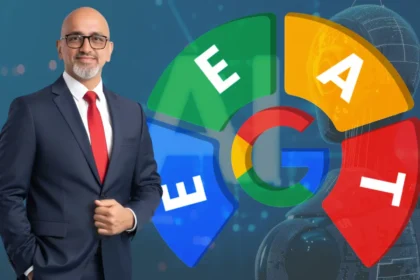Ads that buy themselves? It’s not science fiction, it’s programmatic advertising. While traditional campaigns rely on guesswork, programmatic uses AI to target, bid, and optimize in real time. Learn why this approach is transforming digital marketing, and how you can get started.
Whether you’re a seasoned marketer or a business owner looking to grow your brand online, understanding programmatic advertising is key to staying competitive and relevant.
What is Programmatic Advertising?
Programmatic advertising refers to the automated buying and selling of digital advertising space in real-time using software, data, and algorithms. This process replaces traditional methods involving manual negotiations, insertion orders, and human middlemen.
It enables advertisers to target audiences more precisely, reduce ad waste, and gain better control over performance.
Common Formats in Programmatic:
- Display Ads (banner ads)
- Video Ads (in-stream, out-stream, CTV)
- Mobile & In-App Ads
- Native Ads
- Digital Audio Ads
- Digital Out-of-Home (DOOH)
A Brief History of Programmatic Advertising
The evolution of programmatic advertising is a story of innovation in digital marketing:
1994 – First Online Banner Ad:
The first clickable ad appeared on HotWired.com for AT&T, marking the beginning of online advertising.
2007 – Real-Time Bidding (RTB):
RTB was introduced, allowing advertisers to bid on ad impressions in real time, making ad buying more dynamic and targeted.
2010s – The Rise of DSPs and SSPs:
Demand-Side Platforms (DSPs) and Supply-Side Platforms (SSPs) emerged, making programmatic ad buying more accessible and scalable.
2014–2018 – Mainstream Adoption:
Programmatic went mainstream. Brands, agencies, and publishers rapidly adopted it, especially for display and video ads.
2020s – AI, CTV & Privacy-First Advertising:
Today, programmatic is driven by AI and machine learning. It now spans Connected TV (CTV), audio, and DOOH. With privacy laws like GDPR and Apple’s ATT, the focus is also shifting toward cookieless targeting and first-party data.
Why is Programmatic Advertising Important?
Programmatic offers efficiency, precision, and scale—three things traditional advertising struggles to achieve.
Key Benefits:
- Automation: Ads are bought in milliseconds without human negotiation.
- Precise Targeting: Leverages user data (demographics, interests, location, device, behavior).
- Better ROI: Minimizes waste and maximizes results.
- Real-Time Optimization: Campaigns adapt on the fly based on performance.
- Cross-Platform Reach: Runs seamlessly across websites, mobile apps, CTV, and more.
Did You Know?
- Over 90% of all U.S. digital display ad dollars are now transacted programmatically.
- Programmatic ads are predicted to generate $595 billion in global revenue in 2024.
- Top programmatic platforms report 30–50% lower cost per acquisition (CPA) compared to traditional digital campaigns.
How Does Programmatic Advertising Work?
Here’s a simplified breakdown of the programmatic ecosystem:
1. User Visits a Website
When a user lands on a website, the publisher sends an ad request to an ad exchange.
2. Real-Time Bidding Happens
Advertisers compete in real time to display their ad to that user.
3. Highest Bid + Relevance Wins
The system selects the ad that offers the best value and relevance.
4. The Ad is Displayed Instantly
The chosen ad appears on the user’s screen—all within milliseconds.
5. Performance is Tracked
User behavior (clicks, engagement, conversions) is tracked to optimize future bids.
When Should You Use Programmatic Advertising?
Programmatic is ideal when you want:
- Broad or niche reach across devices and platforms
- Speed in campaign deployment and optimization
- Data-driven targeting and personalization
- Improved ad efficiency and reduced cost-per-click (CPC)
- Real-time campaign performance insights
It’s valuable at every stage—from brand awareness to conversion and remarketing.
Where is Programmatic Advertising Used?
Programmatic advertising is widely used across channels:
- Display Ads – Banner ads on websites
- Video Ads – On platforms like YouTube, CTV, and OTT apps
- Mobile & In-App Ads – Targeted ads inside mobile apps
- Social Media – Facebook, Instagram, LinkedIn, TikTok support programmatic buying
- Digital Audio – Podcast and music streaming platforms like Spotify
- DOOH – Digital billboards and signage in public spaces
Who Uses Programmatic Advertising?
From Fortune 500 companies to startups, everyone is using programmatic:
- E-commerce brands for retargeting
- SaaS companies for lead generation
- Agencies managing large ad budgets
- Media and entertainment promoting content
- Retailers, healthcare providers, travel, and finance sectors
Top Programmatic Platforms (DSPs)
- Google Display & Video 360 (DV360)
- The Trade Desk
- Amazon DSP
- Xandr (formerly AppNexus)
- MediaMath
- Adobe Advertising Cloud
These platforms help manage bidding, targeting, and optimization from one dashboard.
Future of Programmatic Advertising
The future of programmatic is data-rich, privacy-focused, and AI-driven. Here’s what’s ahead:
1. Cookieless Targeting
With the phasing out of third-party cookies, advertisers will rely more on first-party data, contextual targeting, and machine learning.
2. AI & Predictive Targeting
AI will improve predictive analytics, allowing for smarter audience segmentation and ad delivery.
3. CTV & DOOH Expansion
Connected TV and Digital Out-of-Home will gain larger programmatic share due to consumer behavior shifts.
4. Voice & Audio Growth
Programmatic audio is growing fast, driven by podcast popularity and smart speaker usage.
5. Ethical Advertising & Consent
Transparency, user consent, and ethical ad practices will become the norm under tighter privacy regulations.
Growth Forecast:
- Global programmatic ad spend is expected to grow from $595 billion in 2024 to over $800 billion by 2028.
- CTV programmatic spending alone is projected to surpass $45 billion by 2026.
Conclusion: Programmatic Isn’t the Future – It’s the Now
Programmatic advertising is not just a marketing trend—it’s the backbone of modern digital advertising. It offers unparalleled efficiency, reach, and ROI, making it an essential tool in any marketer’s arsenal.
As technology evolves, programmatic will only get smarter and more powerful. Brands that embrace it today are setting themselves up for sustainable digital success tomorrow.
Want to explore how programmatic advertising can elevate your brand’s reach and ROI?
Let’s talk strategy → Visit DzynBuzz.Com to book a free consultation.













